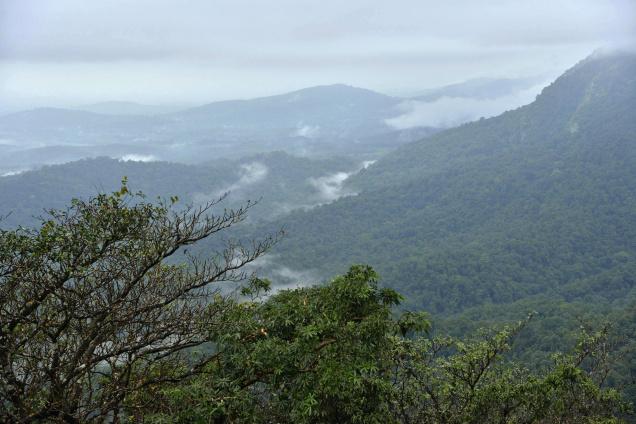Bangalore: In a recent study of rainfall trends using remotely sensed satellite data and actual field data from the Indian Meteorological Department of the Western Ghats region over the past 14 years, it was found that during the monsoon months of June, July, August, September, the average rainfall was more over Karnataka than Maharashtra and Kerala.
The Western Ghats run parallel to the Arabian Sea coast for approximately 1,600 km from the Maharashtra-Gujarat border to the southern tip of Kerala.
There are several reasons for this. First, the mountain topography in Karnataka is broader than the narrow topography of the Ghats in Maharashtra. Due to the greater width of the mountains, the rain bearing winds have to necessarily travel a longer distance and have more time for the drops to coalesce and precipitate as rainfall, resulting in higher rainfall. In contrast, the narrow width of the Ghats in Maharashtra allows the rain-bearing wind to cross over to the leeward side rapidly before precipitation can occur. As for Kerala, the Ghats there are in the form of isolated mountains, where the rain-bearing winds can easily cross over to the leeward side through the gaps in between without precipitation occurring.
Second, the slope of the mountain has a direct bearing on the possibility of precipitation. This is borne out by the Ghats of Karnataka where the mountains are gently sloping, compared to the steep slopes of the Ghats in Maharashtra and Kerala.
The air parcel will retain its energy and speed for a longer time when the slope is gradual. This will provide sufficient vertical motion to cloud droplets to grow by collision–coalescence process and hence form precipitation.
Third, the gentle slope provides a greater area for sunlight absorption and heating leading to greater convection when compared with an abrupt slope i.e. less Ghat area such as that of the Maharashtra and Kerala Ghats.
Fourth, the continuous mountain range presents a greater barrier to rain-bearing winds than a range comprising isolated mountains with gaps in between where the winds can easily pass to the leeward side. Unlike in the case of Kerala, the Ghats in Maharashtra and Karnataka are continuous.
In the International Journal of Climatology, Ms Sayli A. Tawde and Ms. Charu Singh present the results of the study of the effects of topography of the western Ghats on the rainfall that the Ghats receive during the summer monsoon or the southwest monsoon. Ms Sayli A. Tawde, presently a PhD student in the Centre for Atmospheric & Ocean Sciences, Indian Institute of Science, Bangalore, has carried out this work as a part of her M. Tech project under the supervision of Ms. Charu Singh, a scientist at Marine and Atmospheric Sciences Department, Indian Institute of Remote Sensing, ISRO, Dehradun, Uttarakhand.
Interestingly, the study found that often areas of heavy rainfall were far away from the summits of the mountains, as much as 50 km away.
“The reason for this is that there is more chance of rainfall occurring at the foot of the mountain as there is greater depth for the moisture in the clouds to coalesce into big drops which finally reach the ground,” notes Ms Tawde in an email to this correspondent.
The Andes mountains of Chile run parallel to Chile’s Pacific coast and boast of some of the highest peaks in the world. Lying in the rain shadow of the mountains is the Atacama desert — one of the most desolate, barren and hostile deserts in the world. Most of the precipitation from rain bearing winds falls on the windward side or on the mountains themselves and hence the barrenness of the Atacama desrert. Had the western ghats been as lofty as the Andes or the Himalayas, the mountains and the rain shadow region would not boast of the dense vegetation and rich biodiversity of flora and fauna as they do now.

